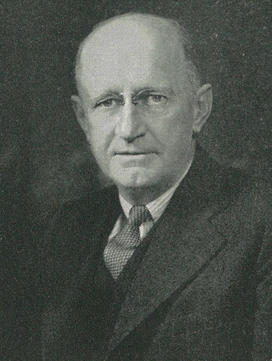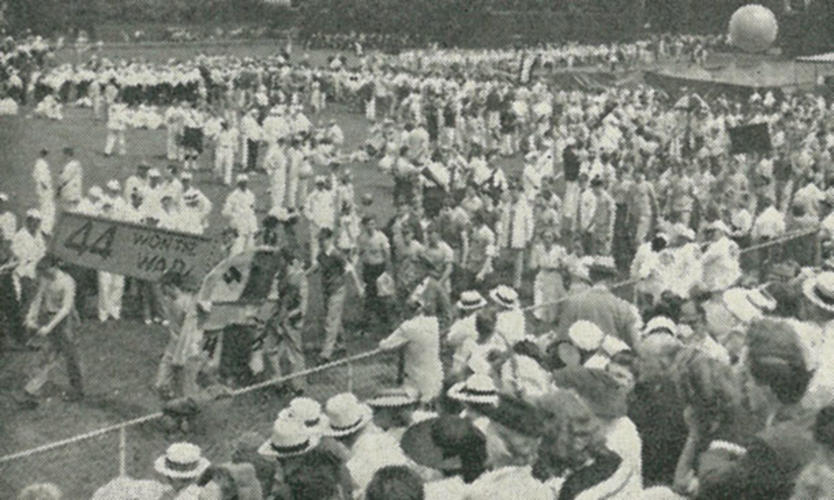Here’s to those preceptor guys:
Fifty stiffs to make us wise.
Easy jobs and lots of pay,
Work the students night and day.
— “The Faculty Song,” 1906
Each year for the virtual holidays, our column lingers for five weeks or so, as the editorial staff conducts its annual bacchanalia and the inevitable resultant remorse. So I go out of my way to find a morsel of Princeton’s past that has a little humanity to it, if not an overt moral, that can hopefully make your own seasonal adventures a little more orange-and-black-and-snuggly, and perhaps keep your gray cells engaged whilst you seek some bacchanalia of your own. Ho, ho, ho.
We have this year a small composition from 1947 that might seem a bit frivolous at first consideration but, as you look around you to your peculiar classmate friends — let’s face it, everybody’s classmate friends are a bit peculiar — it may give you some insight about what you mean to each other and why.
The occasion was the University’s Bicentennial, celebrated to a fare-thee-well in coincidental coordination with the end of World War II and the resulting euphoria at the deliverance of thousands of returning alumni and faculty, even as the sobering reality of the 355 dead continued to sink into the college’s psyche. Understanding this to be a historic — and hopefully singular — circumstance, Princeton held celebratory convocations, seminars on academic issues of every stripe, and the legendary Victory Reunion of 1946 (in which every single class held a major gathering and the P-rade was triple its customary length), and also commissioned a number of publications and reminiscences to capture both the celebration and the prior 200 years that had occasioned it.
Perhaps the most powerful of these commissioned works was the astounding Princeton 1746-1896, in which esteemed Princeton history professor Thomas Jefferson Wertenbaker laid out the entire history of the College of New Jersey in 400 air-tight pages. A historian’s delight, but easily readable by any Princeton aficionado, it delves into the birth in the 18th century and the rebirth in the late 19th century of not only Princeton, but of American undergraduate education itself, which today is arguably the country’s most shining symbol to the world. The book remains almost solely authoritative 79 years later; its successor, James Axtell’s The Making of Princeton University, published a decade after it was commissioned at the Bicenquinquagenary in 1996, simply begins where Wertenbaker leaves off.
But that’s not your gift.
Wertenbaker’s charge was to address and explain the established history of the University, which he took to extend through the renaming and refocusing of the college at its Sesquicentennial. The guy was president of the American Historical Association, so let’s defer to his judgment on that demarcation, but that left the 20th century somewhat adrift in the documentation at the 1946 Bicentennial.
To address the gap, someone conceived the idea of an informal, prismatic look at 20th-century Princeton, as seen by some of its great participants, written on their own subjective terms. The result is a slim, 160-page volume, The Modern Princeton, that tells the 50-year backstory of the place, seen through its atmosphere, its students, its academics, its faculty, its campus, its trustees, and its alumni. Each is written by a separate author, each remarkable. Among the seven are three who — 42 years before — were part of the very first cohort of Woodrow Wilson 1879’s preceptor guys in 1905: Charles Grosvenor Osgood, Christian Gauss, and Robert K. Root, who had each become among the most distinguished educators in the nation. Osgood, renowned professor of English Lit, kicks it off by asking, essentially, what it is that makes Princeton so blatantly unique. And it is the answer from Gauss, very possibly the best-known dean in American education in his time, which is our gift to you today: his entry titled “Life on the Campus.” More of that title later.

And what he describes, in but 24 pages of loving detail, is an undergraduate experience that is your holiday gift this year, a gift from a century ago that so resembles your own Princeton you might take it to be some sort of time warp. Gauss discusses the class as the bedrock of undergraduate relationships and notes the gradual civilization of interclass warfare as a step forward in maturity. Being one of the preceptor guys himself, we can excuse his enthusiasm for the academic structure of the place, to include the four-course plan that was its natural completion in the ’20s. But he takes this a step further to a crucial point, by contrasting the curriculum, notably including the thesis, to those on other campuses, spending a good deal of time on the resulting close interrelationship between the students and faculty; how they all combined to pull in the same direction toward a decent education rather than face each other as perpetual foes. He tells a story, from when he was newly arrived, of an ace student of his who just stopped by his house and ended up completely dismantling and cleaning Gauss’s ancient typewriter, leaving the young preceptor astonished. They became friends for life. Recall, the title of the piece is “Life on the Campus,” not “Student Life.”
Gauss discusses the rich experiences for the students in self-regulated but extremely complex extracurricular activities like the Press Club, the Nassau Lit, and the Princetonian; the great time-honored traditions of Whig and Clio (with a specific citation of the great Norman Thomas 1905); the virtues of Triangle, which he historically terms “Saturnalia”; and the creation and flourishing of Theatre Intime. He is actually admiring of the athletic sphere as it had developed at Princeton because it tried to involve everyone; because it had tried, in conjunction with Harvard and Yale in 1923, to bring fairness to athletic eligibility through its Presidents’ Agreement; and because it produced such outstanding individuals as Bill Roper 1902 and Hobey Baker 1914 to act as potential models for the greater college athletic world.
And crucially, he discusses how the residential nature of the campus, so strongly advocated by Wilson and his successors (on the English model rather than the German, as he notes post-WWII) combined with the closeness of class and faculty, created a true community, one with its own mores and standards, in which all those involved felt they had a legitimate stake. This was 20 years before the creation of the CPUC, and before young alumni were elected to the trustee board upon graduation.
Gauss concludes with Commencement and Reunions (sort of like shooting fish in a barrel, to be honest) as an “affirmation of this continuing community of interest,” not only for the alumni but the faculty as well, in what Andrew Fleming West 1874, in a less bombastic moment, described as “that household of living, that household of learning, which is Princeton.”
There’s one more gift of prescience from Christian Gauss; whether it is greater or less than his vision of Princeton as a vibrant, lifetime community is for you to judge. He notes that this other-oriented environment is a perfect incubator for a service imperative. And in light of two horrific World Wars, that its aspiration should be extended to read: “Princeton in the nation’s service for the welfare of mankind.” It only took us 70 years to catch up to him.
A locomotive in absentia for the great Dean Gauss. God bless us, every one.












No responses yet